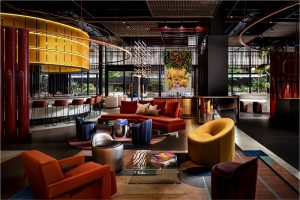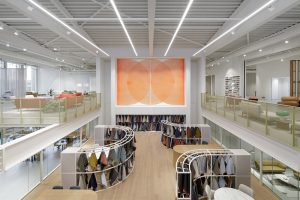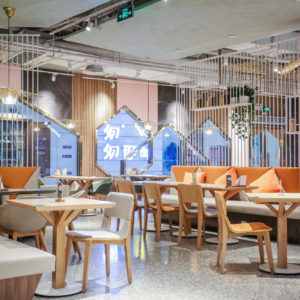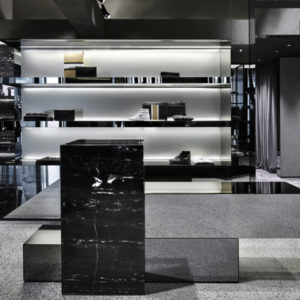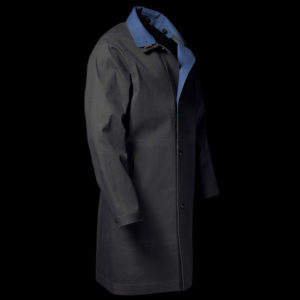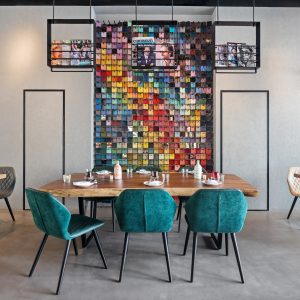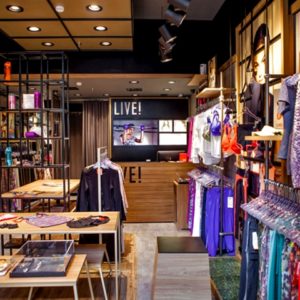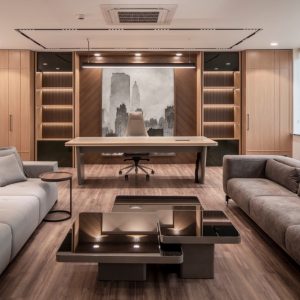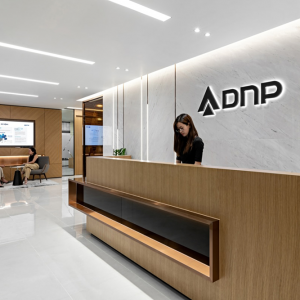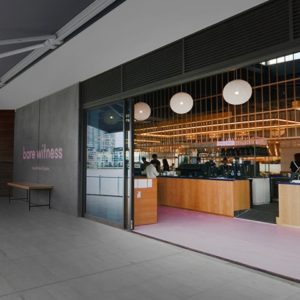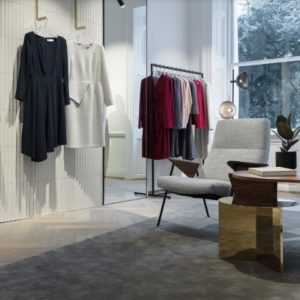

The Cold War Museum Berlin, which opened in November 2022, is centrally located in Berlin-Mitte on the boulevard Unter den Linden between the Brandenburg Gate and the Humboldt Forum. On two floors and over 1,600 sqm, the High-Tech Museum 4.0 illuminates the different facets of the Cold War from 1945 to the dissolution of the USSR in 1991 and makes history tangible across generations with interactive and virtual applications and selected exhibits.
In planning and implementing the exhibition architecture for the museum, particular emphasis was placed on sustainability and recycling of the original building fabric. Until August 2019, the two floors of the office and commercial building at Unter den Linden 14, where the exhibition is presented today, housed the gallery of a German automobile brand. The spatial layout of the presentation areas, staircases, galleries, and access routes was largely retained, and the main part of the former fixtures was integrated into the new concept. When choosing the companies involved, attention was paid to regionality, and the materials used were tested for their sustainability.
To enter the museum’s foyer, visitors symbolically walk through an “Iron Curtain”. The design was created by the Ukrainian artist Vanda Sakhatska. The installation takes up the entire street-side window front and consists of 20 steel elements. The upper part is perforated with the portraits of a selection of politicians who were active in the Cold War era, including Helmut Kohl, Ronald Reagan, Mikhail Gorbachev, Josef Stalin, Winston Churchill, Harry S. Truman, Nikita S. Khrushchev, John F. Kennedy. The lower half shows life-size silhouettes of people united under the peace sign of the “Campaign for Nuclear Disarmament”. When daylight falls in, the figures and portraits are clearly visible in the foyer. During the day, they are only dimly discernible from the outside, but in the evening, when the museum is brightly lit, the perforated patterns also unfold their effect in the direction of Berlin’s boulevard. In contrast to the cold, technical, industrial steel of the “Iron Curtain”, the floor of the entrance area shines in bright red.
The exhibition area on the ground floor is entered through an entrance sluice. The floor in the first section of the exhibition is designed in a black and white chessboard pattern: as living chess pieces, visitors are thus immersed in the history of the Cold War.
Contemporary documentary film material, photos, animations, and eyewitness videos can be called up on interactive monitors, while selected exhibits are presented alternately in display cases. An audio guide can be activated via a QR code, allowing visitors to navigate through the museum with their own smartphones. The monitors are embedded in the walls, which are clad with coated, rust-red patinated Corten steel and which continue the motif of the “Iron Curtain” like a red thread. In the deliberately reduced lighting of the room with its dark ceilings, the patina of the material, reminiscent of aging industrial plants, unfolds its full effect and symbolic power, especially in the interplay with the graffiti-covered wall areas by Enrico Mau aka Demut, and Fabian Brueckner aka Kirk. The section of the exhibition opposite the staircase to the first floor, designed with a view of a Berlin street, is reserved for an installation by Boris Hars-Tschachotin that can be experienced with virtual reality glasses. It shows from different perspectives the famous “leap to freedom” of the GDR policeman Conrad Schumann on 15 August 1961 over the barbed wire of the provisional sector border at the corner of Bernauer Strasse and Ruppiner Strasse in Berlin.
The walls of the staircase leading to the other exhibition areas are also covered with elaborate thematic graffiti. The view from the upper steps towards the ground floor inevitably falls on a double portrait of Nikita S. Khrushchev and John F. Kennedy, which with the slogan “Two sides, the same story” picks up the red thread of the museum concept and refers to the international complexity of the Cold War era. It is no coincidence that the chessboard on the ground floor once again catches the viewer’s eye from this perspective.
An analogous material, presentation, and design concept can be found on the upper floor. In addition, a replica of a GDR room has been created here with original wallpaper and interiors typical of the period. A replica of the Soviet satellite Sputnik 1 floats before the visitor’s eyes, and between the two floors of the museum is a replica of the “Fat Man” atomic bomb that was dropped on the Japanese city of Nagasaki on 9 August 1945. From the gallery towards the entrance area, the view is again drawn to the “Iron Curtain” as well as to an original Dvina S-75 missile.
Architects: Tchoban Voss Architekten
Lead Architect: Sergei Tchoban
Photographs: Ilya Ivanov
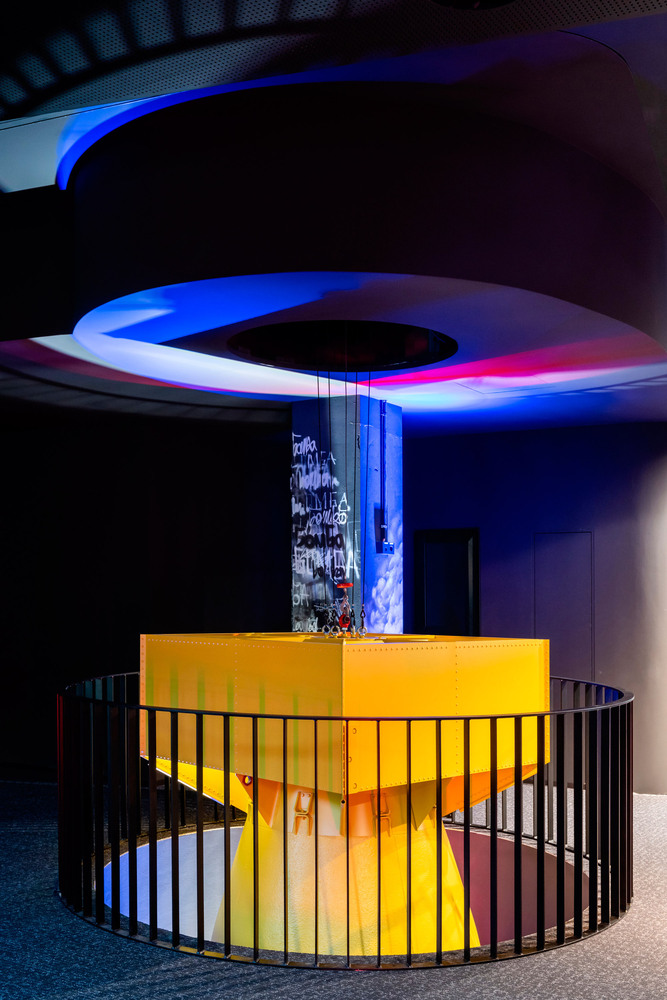
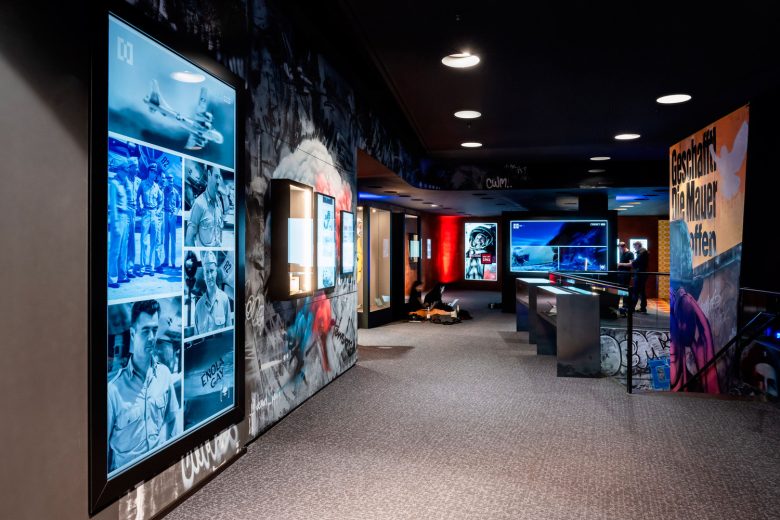


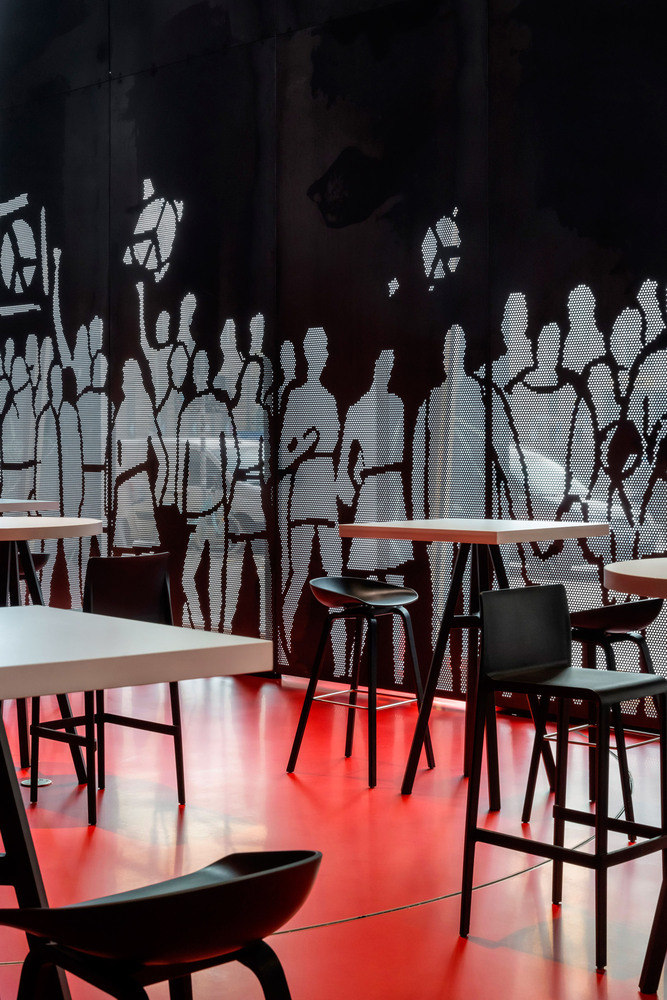
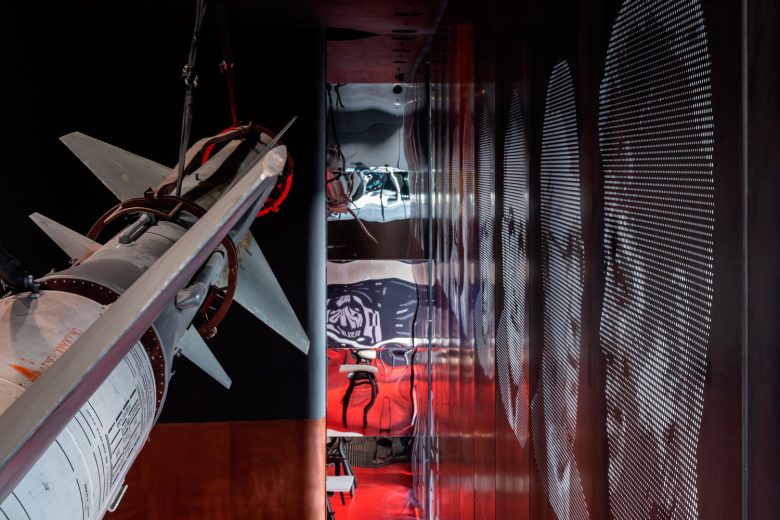
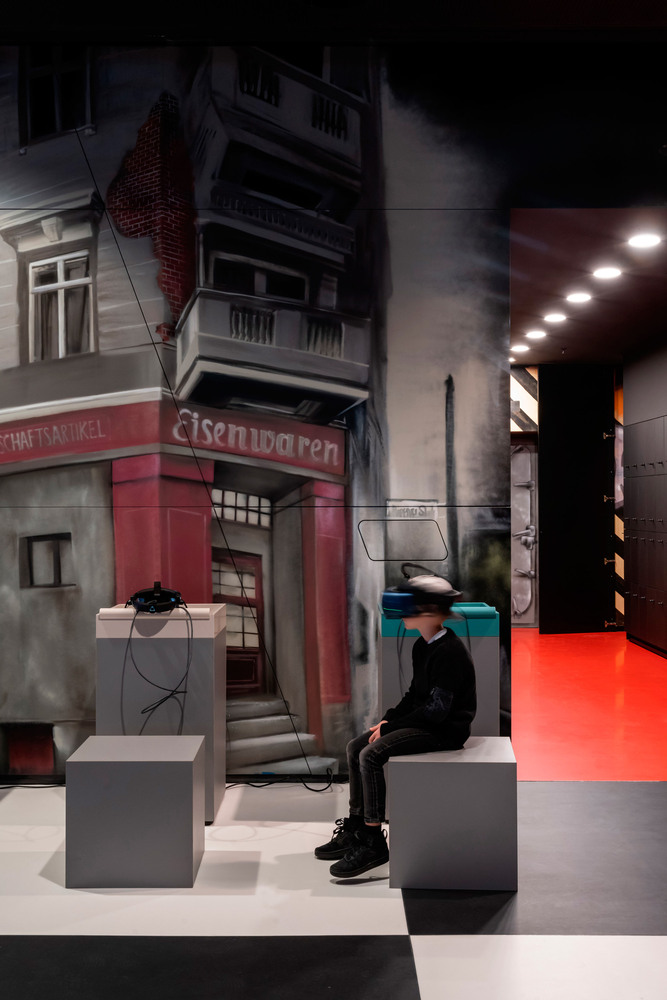
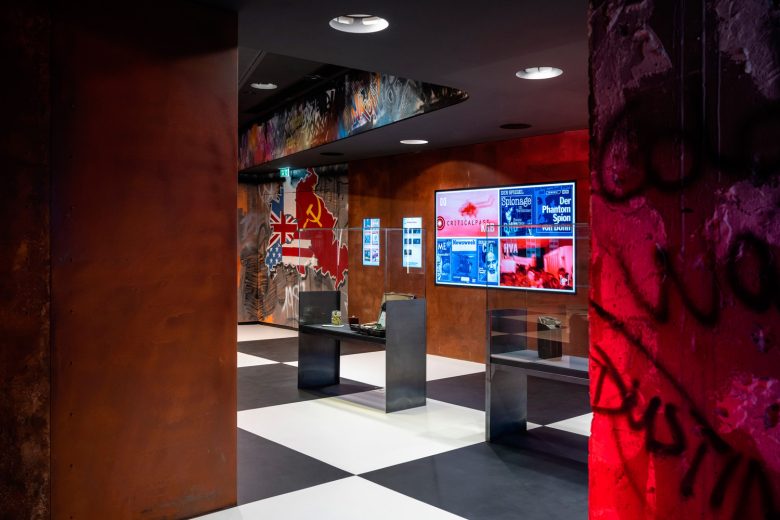
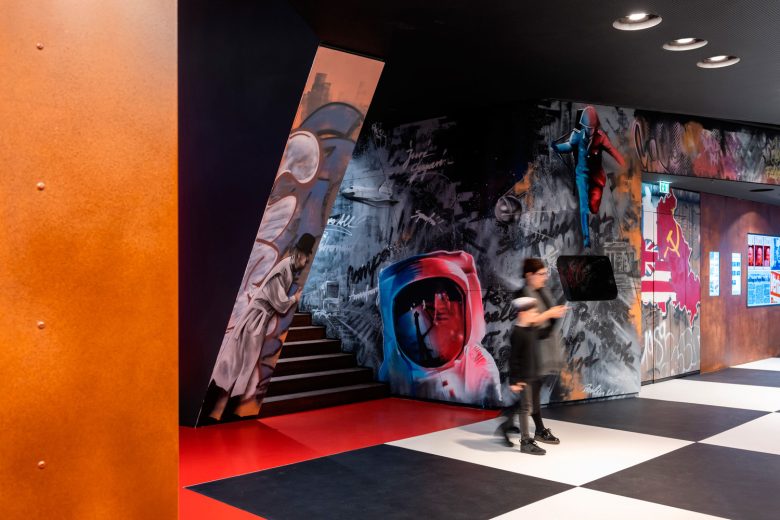


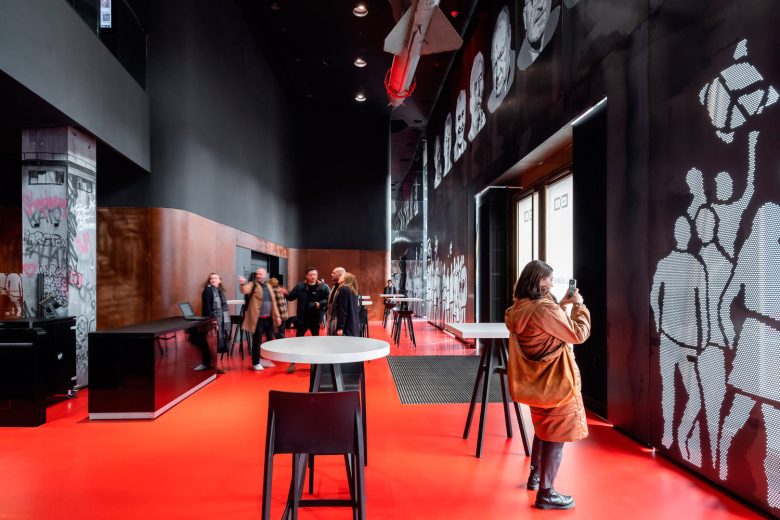


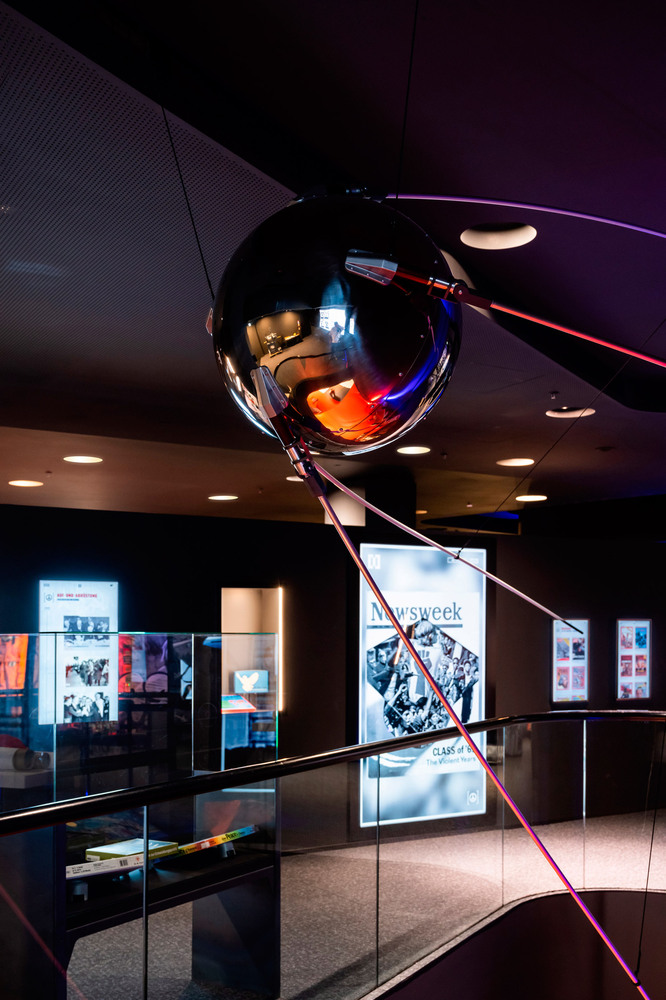
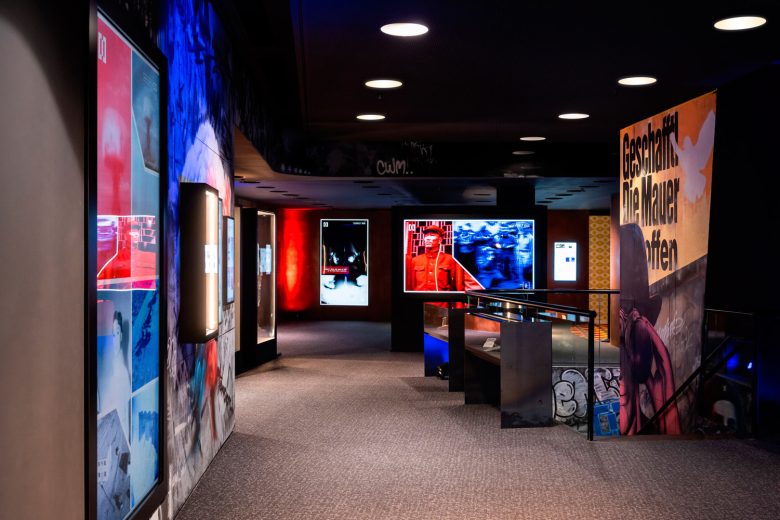
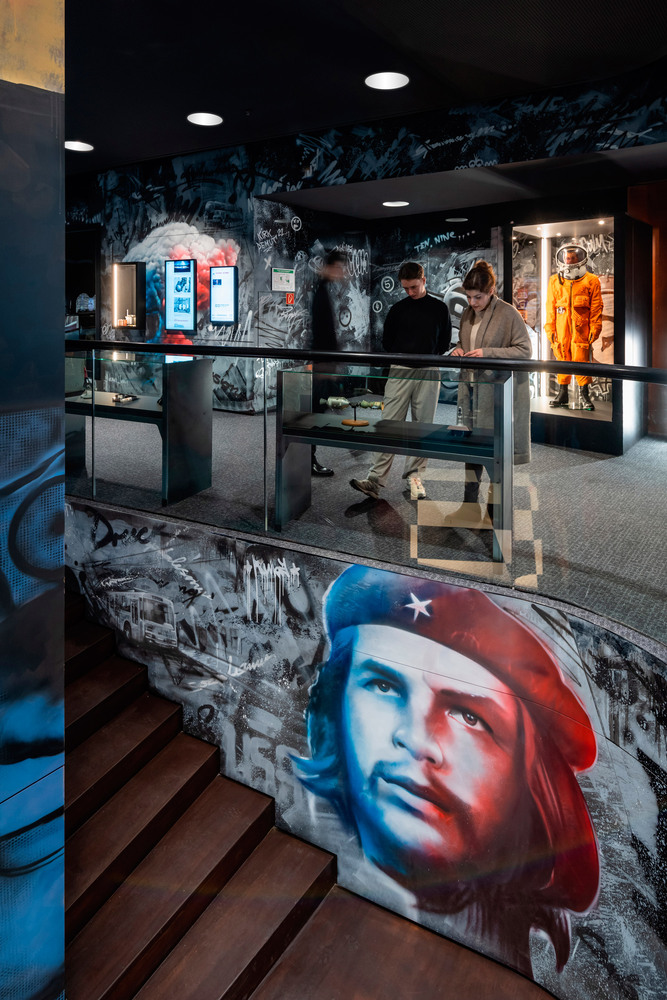
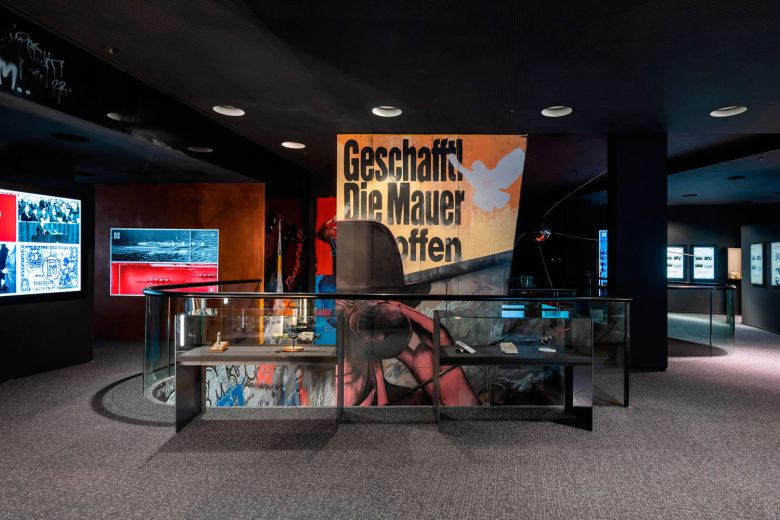
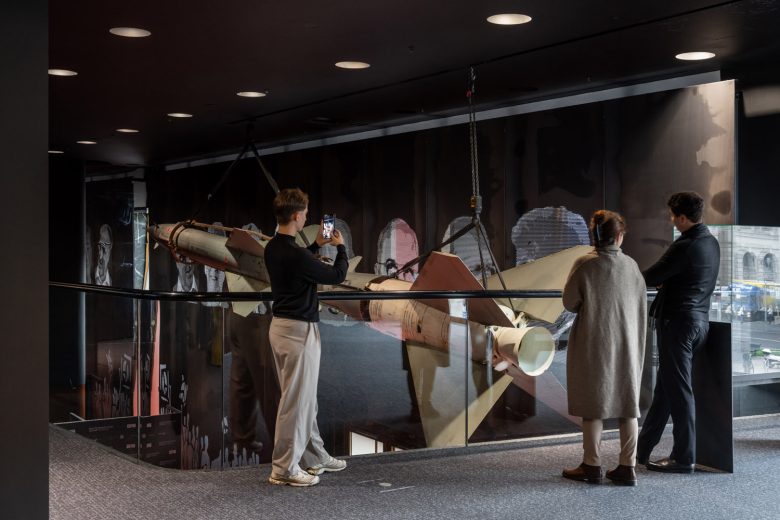
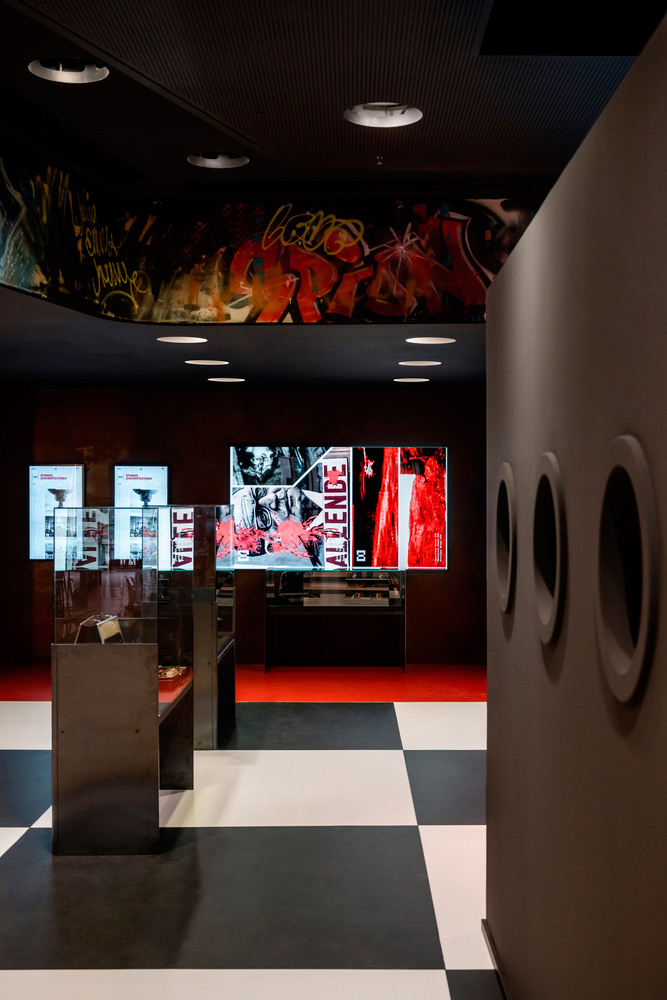
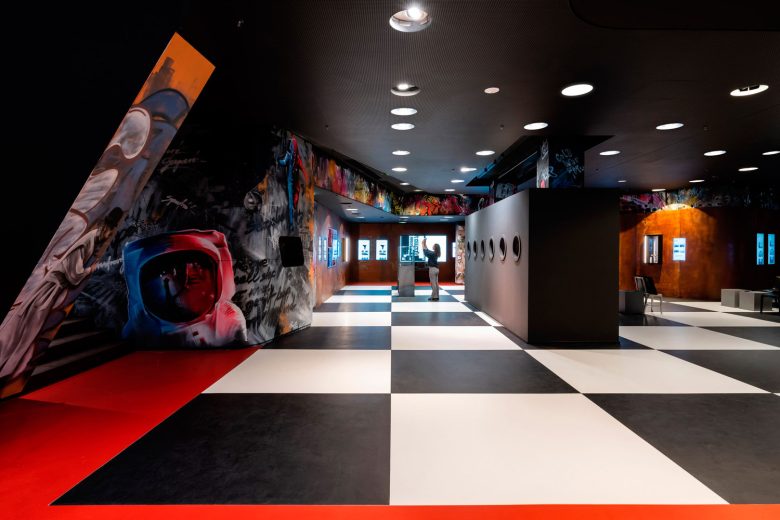
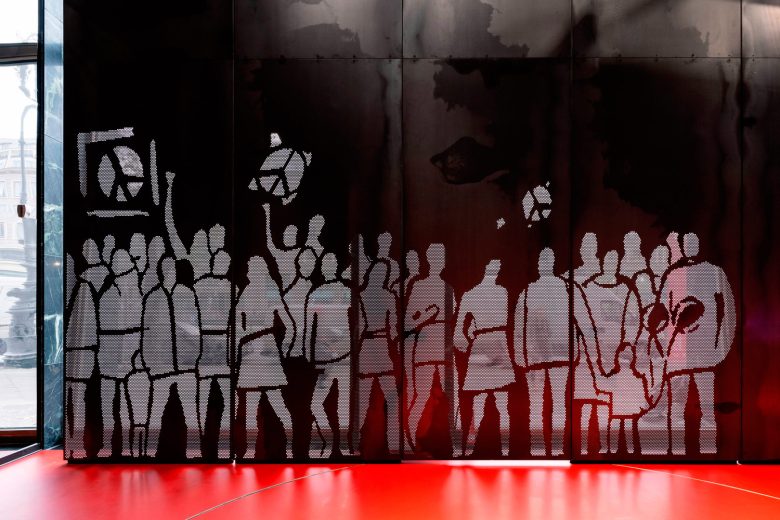
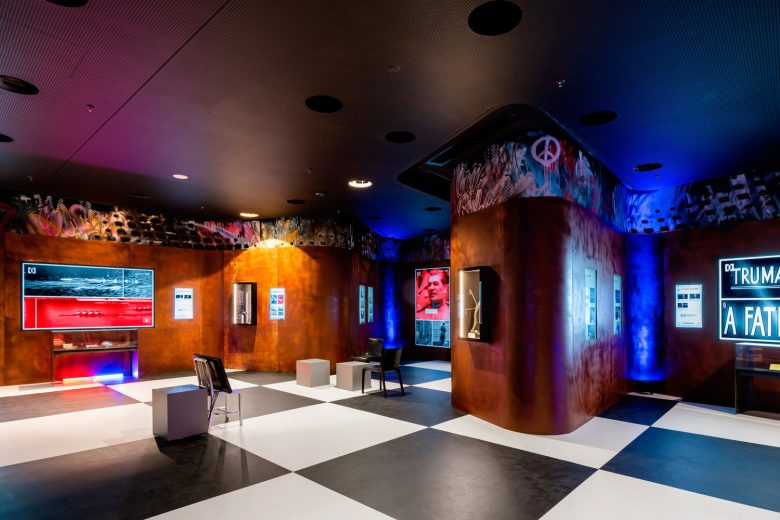

Add to collection
